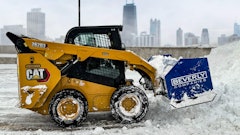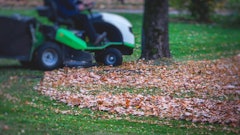
They say a picture is worth a thousand words, but perhaps the numbers are worth a million.
That line of thought coincides with what Wayne Volz, president of Wayne’s Lawn Service and Profits Unlimited in Louisville, Ky., and host of Profit Time on Turfs Up Radio, means when he says that landscape companies need to know their numbers and know their breakeven point.
“When you understand your cost, what you charge for those services is much easier to sell to the right client, but until you know what the selling price has got to be, you're guessing, and when we're guessing, we're putting ourselves out of business,” Volz says.
In fact, Volz says knowing his numbers is what saved his company, when, after nine years in the business, he wasn’t making any money.
“Look at what our statistical failure rates are for our industry. It’s not because we're lazy. They probably didn't sit down and calculate their cost,” Volz says. “As an industry, we're very weak on having price increases and navigating through those price increases as frequently as we should.”
Volz digs into what factors may be affecting landscape professionals’ rising costs and how they can combat them.
The causes
First up, labor costs and insurance costs have quickly accelerated since COVID, Volz says.
“Especially as it relates to snow and ice management services especially, insurance has escalated for most contractors,” Volz says. “We received a notice that our anticipated increase is 32.55% next year, and that's without any claims. I think insurance has gone crazy for contractors.”
Another side effect of price increases resulted from COVID: supply chain disruptions.
“As we saw material costs go high, it had to do with trucking issues, but now that availability has gotten under control again, and the distribution is not as bad as it was, once that price went up, I didn't really see it go down much, though it did decline some,” Volz says.
Combatting the causes
In order to combat rising prices, Volz says landscape companies will have to shift from reactive thinking to proactive thinking, particularly as it relates to raising their own prices.
“I’ve been in this industry 45 years, and things don’t generally go backward from a cost standpoint,” Volz says. “In price, things got fixed a little after COVID, but the reality of it is, generally, year after year, we're going to see some increases in our costs.”
Volz suggests having targets and goals in place so that from a budgeting standpoint, companies can slowly change their budgets, so they don't have big price increases all at once.
“Pricing has got to be adjusted annually and maybe within the season,” Volz says.
When it comes to talking to customers about price increases, landscape companies can adhere to a few strategies. First, landscape companies should understand that certain customers will be loyal regardless, and for those that aren’t, it may be time to move on.
“When I was a contractor, I was scared to have a price increase because I thought I'd lose my customers,” Volz says. “We may outgrow our customer base that got us started a lot of times. We have to readjust who we're going after. We feel bad as business owner sometimes firing customers, but the success of your company is relying on you as a business owner when it comes time to change pricing and reevaluate.”
In addition to reevaluating customers, companies may need to reevaluate what services they offer.
“Look into the more profitable services like fertilization or weed control, lighting, holiday lighting, irrigation, things that are going to be more profitable for us on the landscaping side of the business, versus spending all of our hours doing the mowing,” Volz says. “Even if you’re a one-truck operation, don’t sell five or six days of mowing services. Use a few days for mowing and then transition into higher profit margin services."
When it comes to addressing upcoming price increases with customers, Volz found that doing it at the end of the season and using a personal letter to do so works best.
“Don't put it off,” Volz says. “Ours go out in the early part of January each year, and we send it out with an evaluation and a notice of our pricing for the following year.”
This works for several reasons, Volz says. First, the customers are coming out of the last season and are generally pretty satisfied with the company’s service. Second, the customer likely hasn’t yet been targeted by any other companies with mailers and emails.
In that letter and evaluation form, Wayne’s Lawn Service gives customers the opportunity to prepay the season or month to month.
“The residential market is the most susceptible to transition during the winter or spring—I call it the 'customer carousel' when customers hop from business to business,” Volz says. “If we can get them committed to us during the month of January by offering them a small percentage of prepaid discount, that's a good way to get customers to buy more from you as well.”
Finally, Volz says, if possible, consider programs such as early order programs.
He recalls a time two years ago when this method paid off: When herbicide prices spiked, his company had already early ordered, so instead of having price increases of 25%, his company didn't have to deal with that.
“The best way to stay ahead of that is to know where your company's at, where you want to be and what it's going to take to get you to that point so you can be proactive on early order programs or securing equipment for something that you're going to be offering new next season," Volz says.
Overall, Volz encourages contractors to not be complacent about pricing.
“If our industry wants to change, we need to understand our pricing,” Volz says. “Know that none of us like price increases, but we absolutely can’t stop it.”





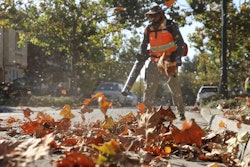

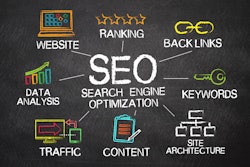




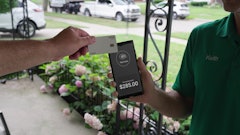
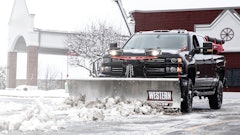


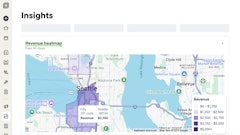
![Gravely Pro Turn Mach One My23 Dsc03139 Edit 1200x800 5b2df79[1]](https://img.greenindustrypros.com/mindful/acbm/workspaces/default/uploads/2025/10/gravely-pro-turn-mach-one-my23-dsc03139-edit-1200x800-5b2df791.BucBnDoN22.jpg?ar=16%3A9&auto=format%2Ccompress&fit=crop&h=135&q=70&w=240)
